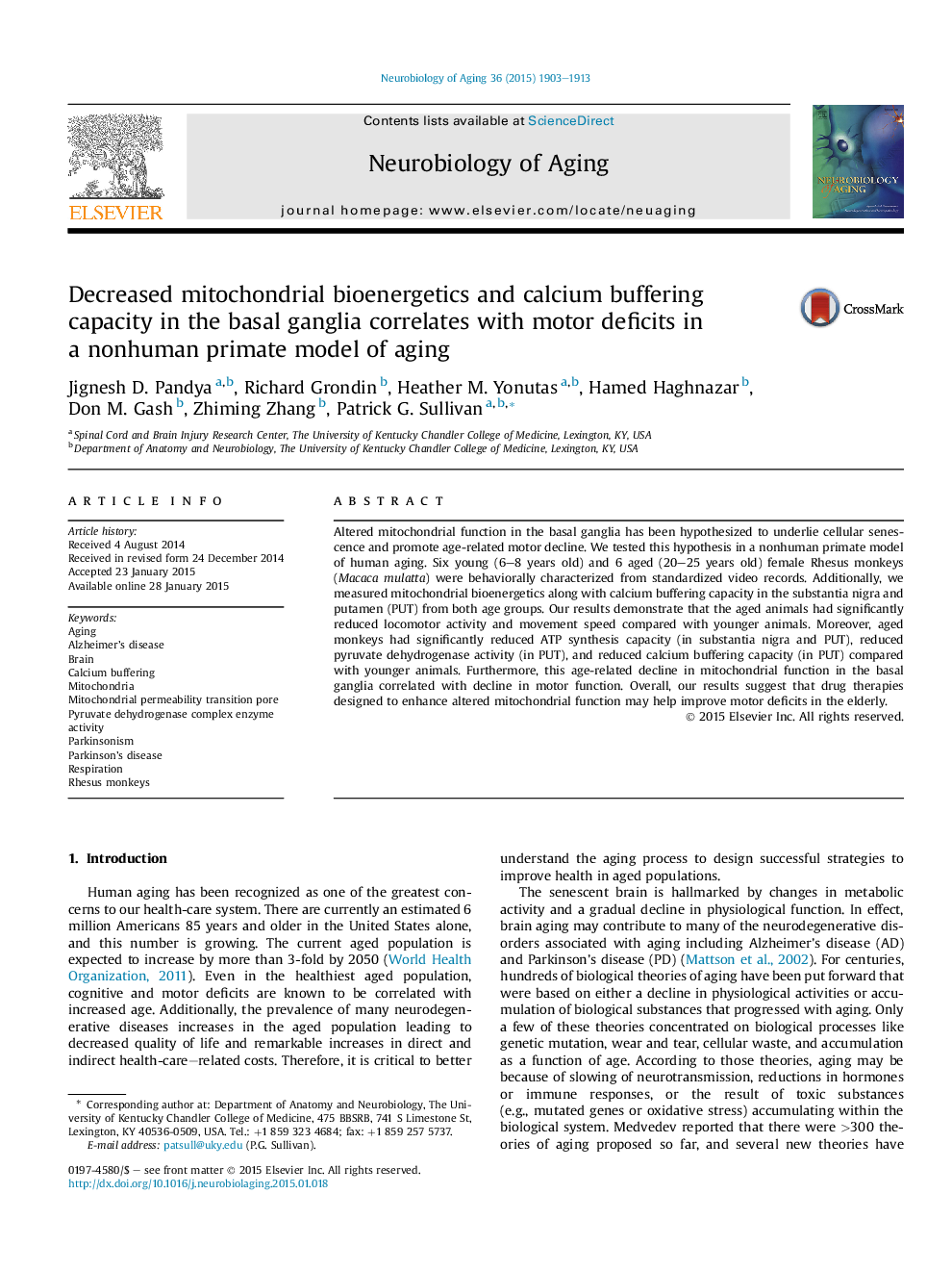| Article ID | Journal | Published Year | Pages | File Type |
|---|---|---|---|---|
| 6804354 | Neurobiology of Aging | 2015 | 11 Pages |
Abstract
Altered mitochondrial function in the basal ganglia has been hypothesized to underlie cellular senescence and promote age-related motor decline. We tested this hypothesis in a nonhuman primate model of human aging. Six young (6-8 years old) and 6 aged (20-25 years old) female Rhesus monkeys (Macaca mulatta) were behaviorally characterized from standardized video records. Additionally, we measured mitochondrial bioenergetics along with calcium buffering capacity in the substantia nigra and putamen (PUT) from both age groups. Our results demonstrate that the aged animals had significantly reduced locomotor activity and movement speed compared with younger animals. Moreover, aged monkeys had significantly reduced ATP synthesis capacity (in substantia nigra and PUT), reduced pyruvate dehydrogenase activity (in PUT), and reduced calcium buffering capacity (in PUT) compared with younger animals. Furthermore, this age-related decline in mitochondrial function in the basal ganglia correlated with decline in motor function. Overall, our results suggest that drug therapies designed to enhance altered mitochondrial function may help improve motor deficits in the elderly.
Keywords
Related Topics
Life Sciences
Biochemistry, Genetics and Molecular Biology
Ageing
Authors
Jignesh D. Pandya, Richard Grondin, Heather M. Yonutas, Hamed Haghnazar, Don M. Gash, Zhiming Zhang, Patrick G. Sullivan,
